Our Journey to the New Aphex
Originally published in February 2021.
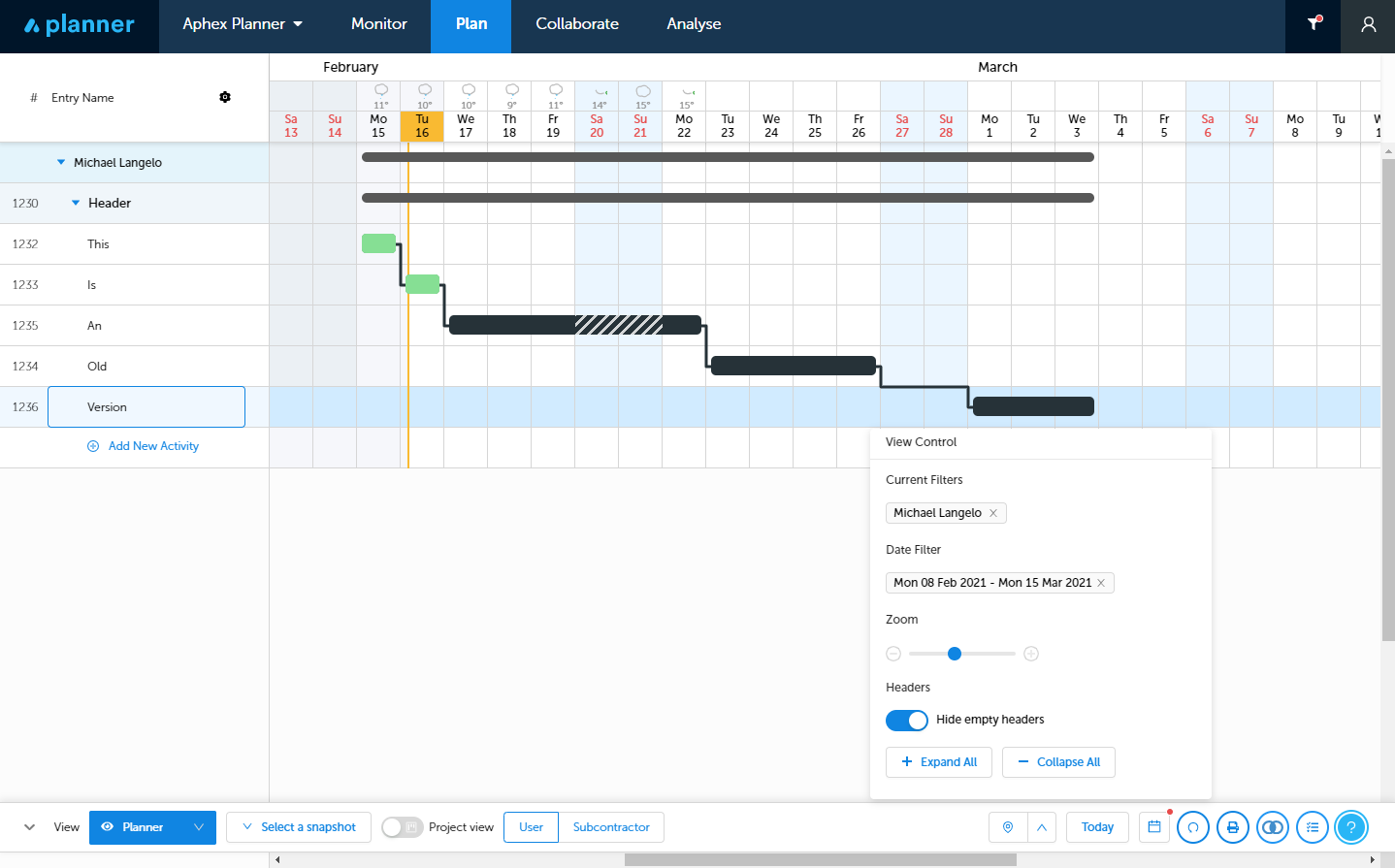
In our previous lives as project managers, quantity surveyors, and planners, it was rare to stop and write about your last project or role, and even rarer to have time for such reflection.
Whilst time hasn’t become any more abundant, it felt important to pause and document the Aphex journey over the last two years. Important for the Aphex team, yes, but also important for our users and the wider construction community. Not only because this journey has led us to today and the launch of the new Aphex, but also because it sets the direction we’ll continue to move in.
Solving Simple Problems
Unless you were one of the 15 users who started using Aphex Version 1 in late 2018, you’ve only been on part of the journey — though undoubtedly the better part. By way of summary, the origins of Aphex can be explained in a single idea: construction planning is disconnected.
This problem was obvious to us as construction people, and to everyone we spoke to at the time. And with such an obvious problem came the confidence that the solution must be equally obvious. We needed to build a simple, cloud-based lookahead planning tool, connected through a single database. Something as easy to use as Excel, since that was the tool most engineers relied on to quickly build a gantt chart.
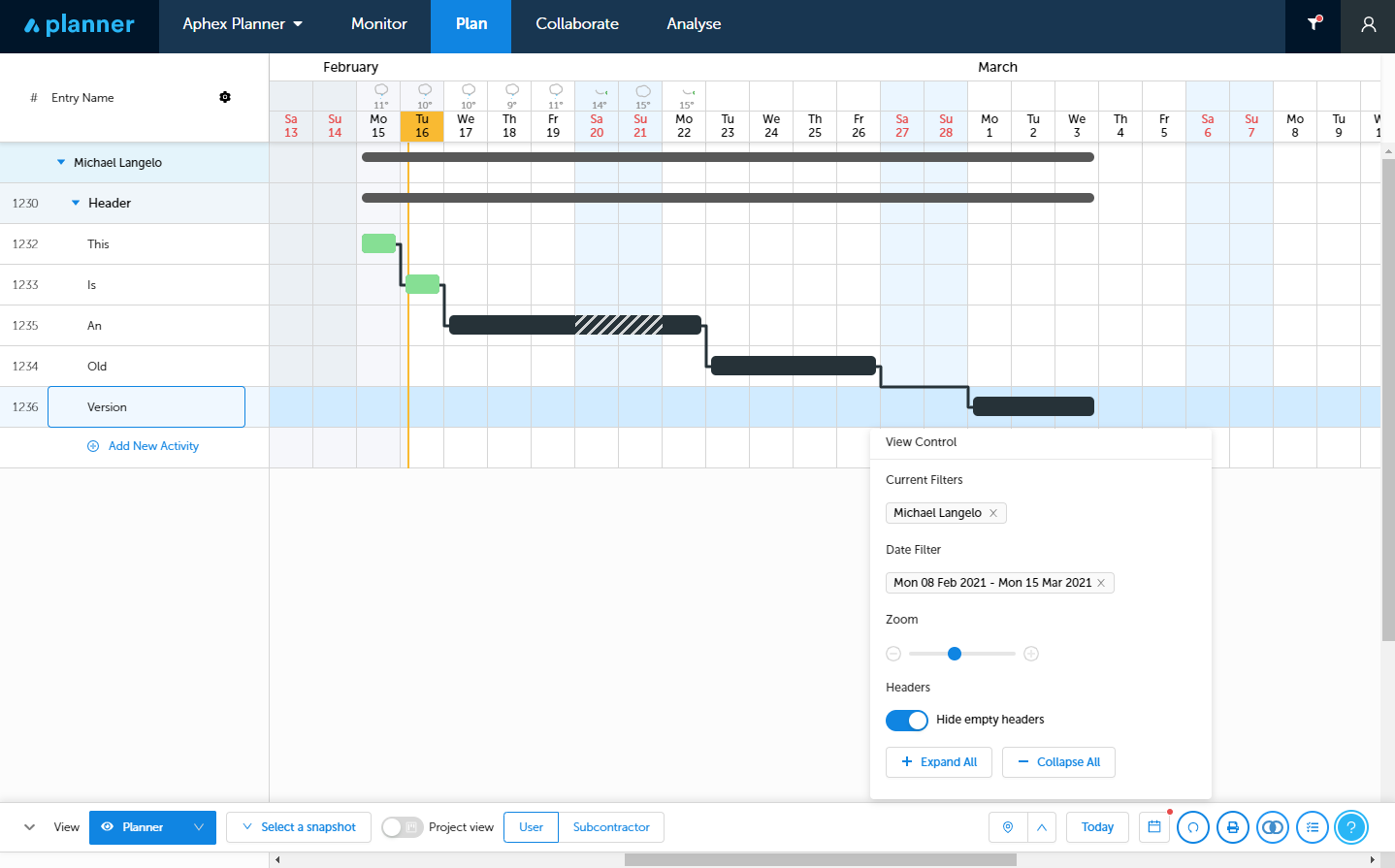
In late 2018, we launched Version 1 of Aphex Planner and proudly showed it off to potential users in the UK. Convinced that a clear problem paired with a simple solution would make adoption a “no brainer,” we were surprised to quickly learn that many potential customers wanted more.
Beyond the usual trials of a startup, we were hearing requests for features we had never imagined engineers asking for: resource loading, what-if analysis, production tracking. And the more people we showed, the more “critical” features appeared to be missing… baselines, WBS trees — the list went on.
At first, we scrambled to pull features forward from our roadmap. But something didn’t feel right. How could site teams, used to spreadsheets and whiteboards, suddenly demand advanced planning features? These were already available in the complex software planners used to manage the project’s master schedule.
So we started analysing the feedback and how our software was actually being used. Two things stood out. First, nearly all of it came from planners, not engineers as we’d expected. Second, despite their complaints, people were definitely using the software. Our first launch was far from a success by any measure, but it did attract regular users — almost exclusively planners.
Focusing on Early Adopters
We knew that most projects around the world relied on some form of short-term or lookahead planning, usually owned by engineers or construction managers. But our earliest adopters were planners, so we leaned into that.
We began building and releasing features planners wanted most: WBS tools, import/export functionality. To our surprise, usage grew. Even more surprising, planners started trying to onboard their engineers.
At that point, we thought we’d cracked it. Build what planners want, and let them train their engineers. So we kept going. In 2019 alone we released over 50 new features, most of them targeted at planners with high expectations.
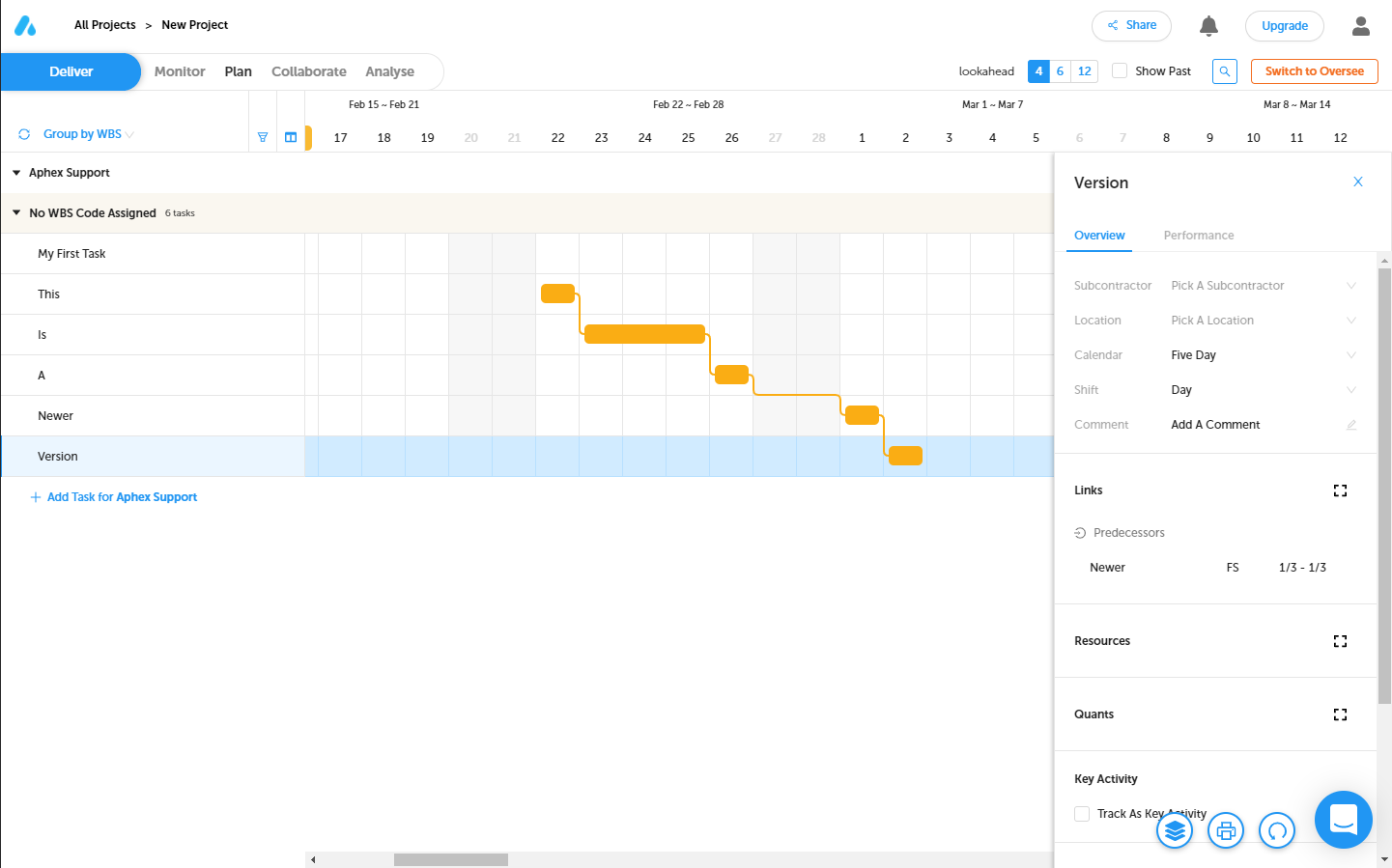
By late 2019, we had a solid base of UK projects using Aphex Planner, including deployments with 50–150 users. Suddenly, cracks appeared again. Larger projects, where planners were our strongest champions, struggled to get adoption from their engineers.
Other warning signs emerged. Our Customer Success team was inundated with training and support requests from engineering teams. We were overextended running repeat small-group sessions, chasing adoption, and working around the clock to keep a handful of projects on track.
Why did project size have such an impact? One key reason was that we’d gradually built Aphex Planner into a tool for planners — a group comfortable with complex systems. In doing so, we had drifted from the original “Excel-killer for engineers” idea. Combine the growing complexity of our software with the natural complexity of big projects — thousands of tasks, hundreds of workers each day — and it’s clear why engineers felt too much friction in building and managing their plans.
So, while our Customer Success team worked tirelessly to support users, we again pushed out features, trying to balance competing demands. Planners wanted more power, engineers wanted simplicity. This culminated in Aphex Planner Version 5 in early 2020, introducing the concept of Modes: Deliver, designed for engineers, and Oversee, designed for planners.
The Big Bet
A few months into deploying Version 5, we had our eureka moment. Looking back, its simplicity feels obvious, but at the time it was a breakthrough. We realised that lookahead planning isn’t owned by any one person or role. Successful lookahead planning is a coordinated effort — a dance between engineers, planners, project managers, supervisors, and the workforce. Like a dance, it has rhythm, and for it to work, everyone needs to know their part and how it fits into the whole.
In March 2020, we set our vision: to build the platform where construction lookahead planning and communication happens. To put workflows at the core of everything and to facilitate the dance.
To do that, we needed a clean slate. No compromises, no baggage from what we’d already built. We decided to bet the farm. We stopped releasing new features and instead secretly began building a new Aphex from scratch.
Fast forward almost a year, and after an immense amount of work from an incredible team, we are launching an Aphex that isn’t just for engineers or planners, and doesn’t trade one group’s needs against another. Instead, it’s a platform that embraces the differences between our users and builds workflows to connect them.
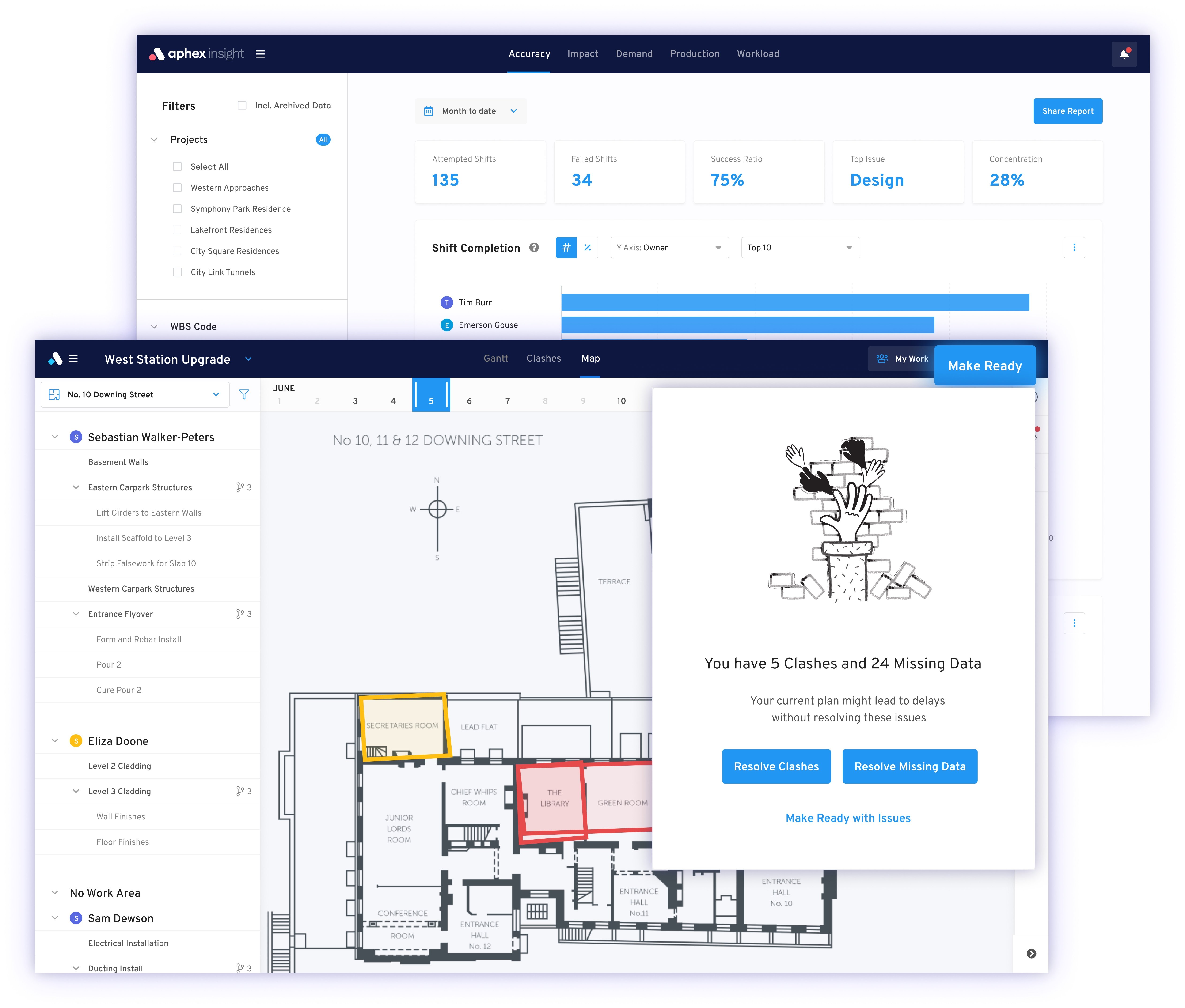
Delivering on a Mission
Our mission at Aphex is simple: put teams back in control of how they plan and communicate work.
From our own experience in construction, we know the sickening feeling of being “behind the play,” slightly out of control. Even with better tools, we can see from millions of task days completed in Aphex that many delays still come down to “poor communication” or “poor planning.”
These are process problems, not site problems. While project teams need tools to deal with delays caused by things like slow design or scope change, it’s on us to address the delays caused by planning and communication.
In the new Aphex, we’ve taken big swings at both:
Planning reliability – Poor planning often comes from time-poor individuals working in isolation on complex projects. Traditional tools overwhelm, while spreadsheets hide interdependencies. The result: plans that simply can’t be delivered. Our approach is to strip away programme-level complexity, letting teams plan in their own workspace while we take on the burden of tracking the bigger picture. At its extreme, this gives a single engineer planning 50 tasks visibility of how those fit within a 10,000-task programme.
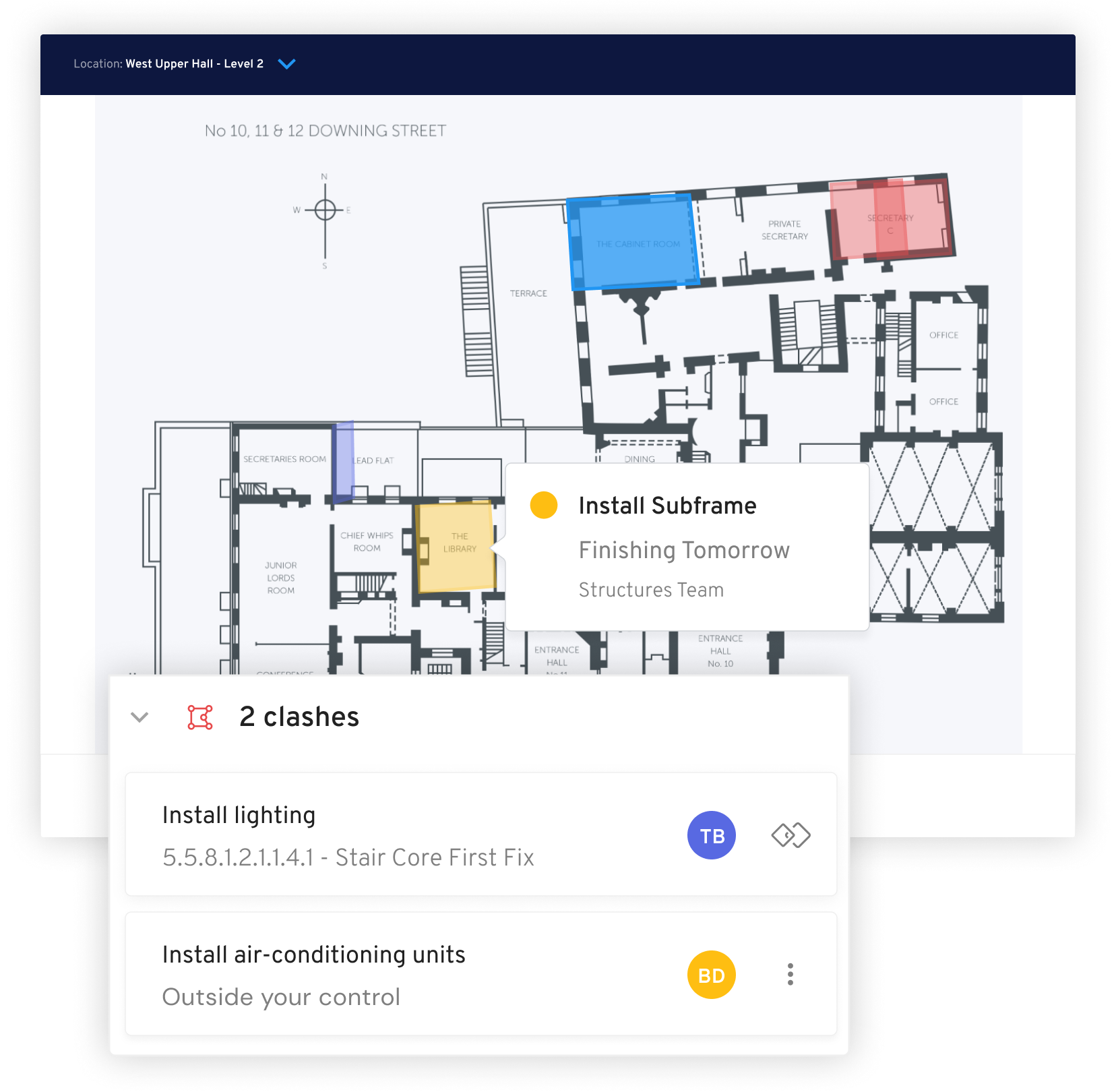
Communicating plans – Traditionally, collaborative planning happens in long workshops with sticky notes and whiteboards. Afterwards, someone transcribes it all into a gantt chart and emails it around. Not only is that inefficient, but success depends on every crew, supplier, and supervisor parsing that information correctly. Too often, it falls apart.
In Aphex, teams can synchronise their readiness and publish interactive plans that anyone can access. Our Published Versions mean suppliers, site teams, and clients can instantly see the parts of the plan that matter to them. No sign-up required. No subscription needed.
This is where we’ll keep focusing: connecting everyone on a project to the plan — and specifically, to the part of the plan they care about.
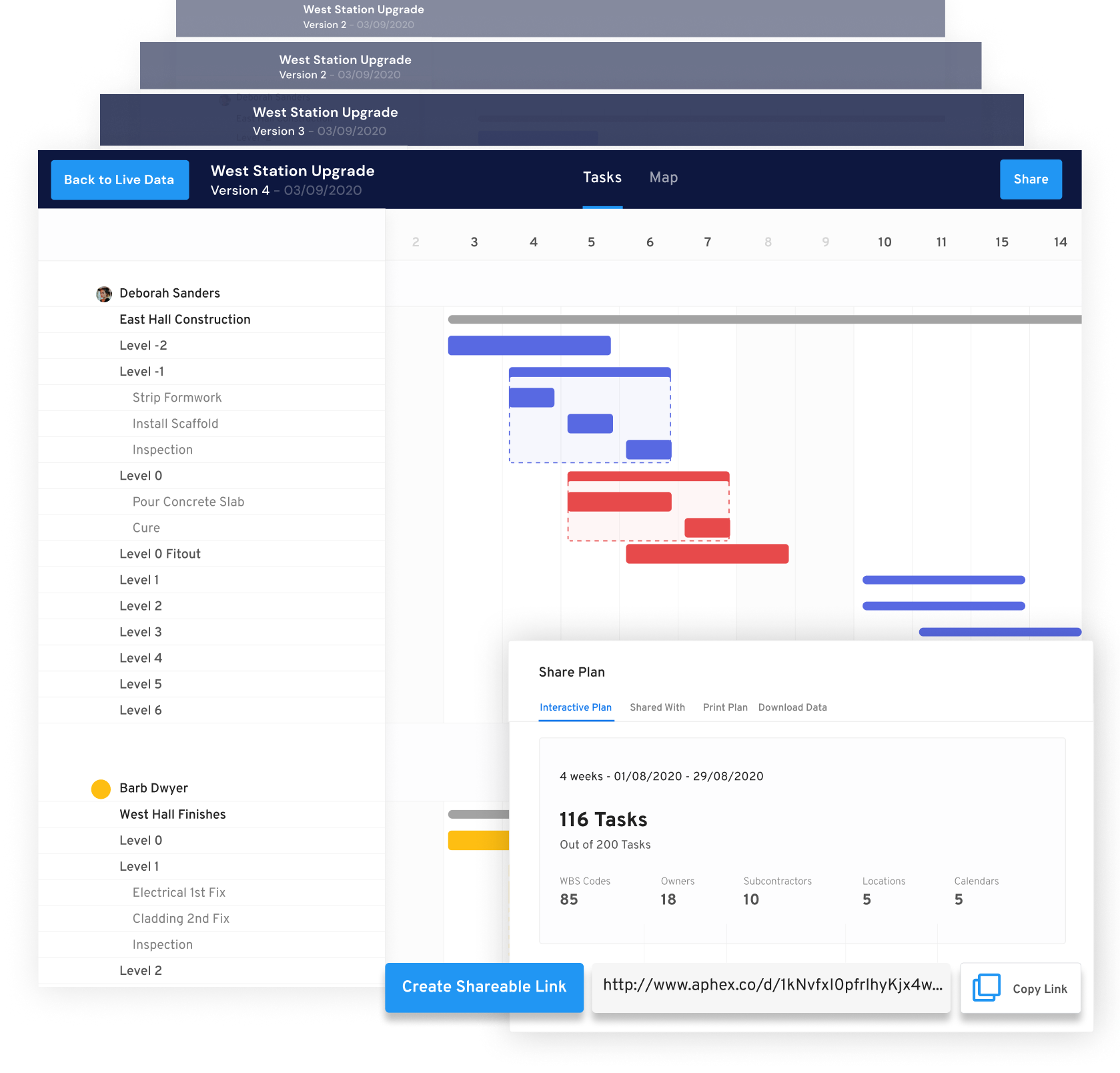
Looking Ahead
Our journey to date has been shaped by our users, through both the positive and the not-so-positive feedback. The new Aphex is a bold change, and we believe it’s a massive improvement for construction teams everywhere.
As always, happy planning!
— Jason

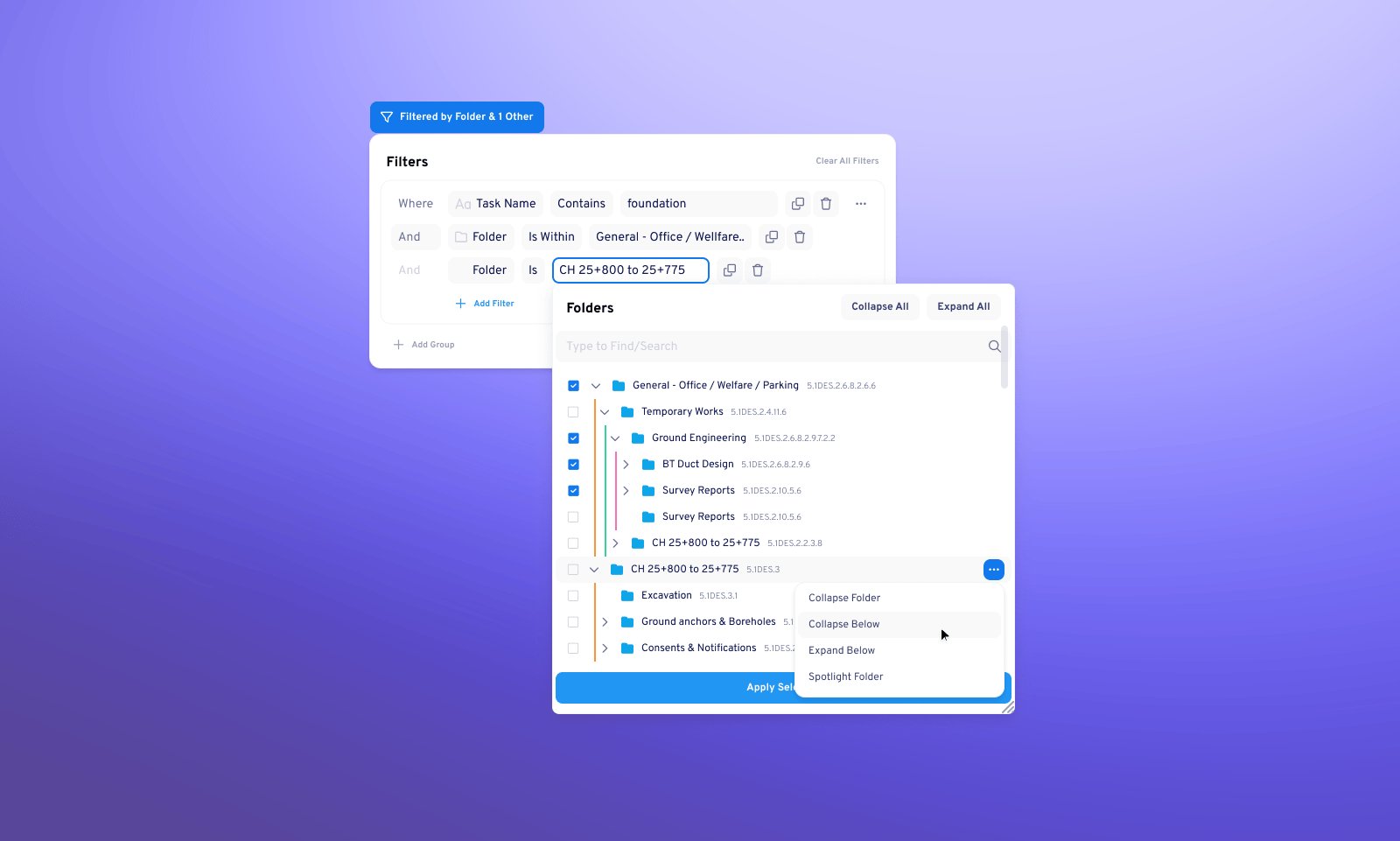
.png)
